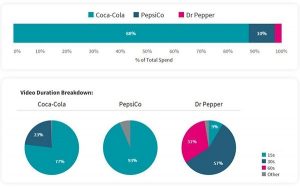Selecting an order-taking software solution to streamline ordering and fulfillment processes is an important decision for any growing B2B manufacturing and distribution business. Making this decision is even more challenging due to the changing landscape of the B2B wholesale industry.
In this post, we’ll give a general overview of the trends driving the order-taking software landscape and how to evaluate whether an order-taking software solution will allow you to keep current with those trends now and in the future.
3 Trends Driving the Order-Taking Software Landscape
An industry that once relied on paper processes and traveling field sales reps is increasingly turning to eCommerce and mobile applications to meet the needs of customers. The “Amazonification” of B2B is changing what customers expect from their suppliers as well as the tools those suppliers choose to meet those needs.
According to McKinsey and Company, there are three major trends shaping the B2B industry. They are:
- Changing customer demands. Customers want transactions to be fast, simple, and easy, but they also expect the products and solutions they buy to be increasingly complex. This means that B2B companies need to sell seamlessly across multiple channels, such as eCommerce, field sales, and mobile, while retaining the ability to handle more complex ordering requirements like personalization.
- Changing role of field sales reps. As customers increasingly turn to self-service options like eCommerce and mobile commerce, the role of field sales reps is changing. Customers are more comfortable gathering information and placing orders online. This means that the sales role is becoming less tactical and more strategic—less about answering product questions and placing orders,= and more about creating solutions for more complex customer problems, analyzing customer data, and performing other high-value activities.
- The need to get more from data. As sales processes move online and big data allows businesses to gather increasing amounts of information about products and customers, understanding how to use all that data is a big challenge. Better reporting tools and predictive analytics tools will allow B2B companies to better understand customer data and make decisions that can facilitate topline growth.
Keep these three trends in mind evaluating order-taking software.
What to Look for in Order-Taking Software
When you’re selecting order-taking software, not only should you consider the basic functionality around taking orders, you should also examine how the software will enable you to keep up with the larger demographic and industry trends outlined above.
That’s a lot to consider. Start with these five areas that deserve careful consideration:
Multichannel Enablement
As businesses increasingly move to B2B eCommerce and mobile, a system that can work well across multiple sales channels—especially mobile—is critical. Recent studies show that 42% of B2B buyers now use mobile devices during at least one part of their purchasing process. This number is likely to grow as mobile-dependent millennials become an even larger part of the workforce.
Despite growth of the digital sales channel, B2B field sales reps continue to be an important sales channel for wholesale businesses and manufacturers. Supporting their ability to sell more product on the road from either a mobile device or laptop is crucial for companies that want to grow.
For field sales teams, the ability to take mobile orders should be unaffected by connectivity. This means that the order-taking software you choose should ideally be a native mobile app, which opens as a program from a mobile home screen, rather than being browser-based. Because they don’t rely on internet connectivity for placing orders, native mobile apps are reliable, fast, and easy to use.
Functionality
Placing orders isn’t the only task order-taking software needs to be able to do. Reps and customers must be able to view, search, and edit existing orders. Access to full customer order history and their favorite items allows repeat orders to be easily entered, simplifying the order process. And, orders themselves aren’t all you need to know about the customer: reps need access to other information about the relationship, such as notes about their preferences, any problems with past orders, and their payment history. The ability to easily enter and update product information, deliver it in a digital catalog, and order items directly from the catalog are also important features that make it easy for your customers and reps to find and order your products.
Data and Analytics
The ability to gather and analyze customer data to make decisions based is increasingly significant for B2B companies. Order-taking software should not only enable you to view individual customer order history—you should be able to look at individual and aggregate customer order history over time as well as seasonal or economic trends that may impact the customer. This data will allow you to develop solutions that increase order size and better meet customer needs. This analysis and reporting also uncovers strategic opportunities, such as whether or not to carry different products or how to best address customer satisfaction issues.
Integration with Other Business Systems
Supply chain, ERP or accounting software, and eCommerce are areas of integration that you should consider. Supply chain integration is key to customer satisfaction: customers want to know the status of their order from the time it is placed until it arrives at their loading dock, so being able to easily integrate your order-taking software with inventory and logistics is crucial.
Integration with ERP or accounting software is also important. It helps payments be easily processed, and it makes payment history available to those who need it. Order-taking software should also be integrated with eCommerce and mobile order-taking software, as this allows you to meet customer demands for self-service and facilitates ordering across the channels they choose.
While there are various ways to integrate these systems, the easiest way to accomplish these integrations is usually with APIs—so look for order-taking software that has APIs which integrate with your back-end business systems.
Scalability and Ease of Use
If your business is growing, you need order-taking software that can grow with you. One of the advantages of choosing a cloud-based application for order-taking software is that it doesn’t require any special hardware to run: all you need is an internet or mobile connection. This makes cloud-based software a very cost-effective solution, since no upfront investment is required. These applications also have the ability to scale from one user up to as many as you might need.
Selecting an order-taking software solution is a critical decision for your business. You need to consider not just your current business needs but your future needs as well. However, a solution that is built around the trends and ideas outlined above should enable your business to meet customer needs today and support growth in the future.
Are you considering using an order-taking software? What trends are driving you? We’d love to hear about it in the comments.
Business & Finance Articles on Business 2 Community(71)








